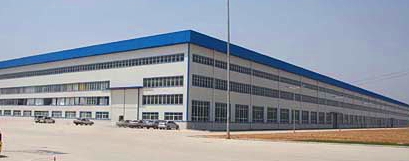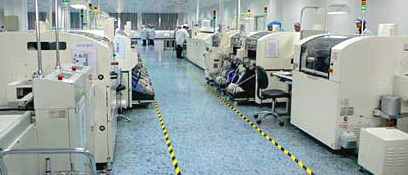- Min.Order :1 Kilogram
- Purity: 98% Min
- Payment Terms : L/C,D/A,D/P,T/T,Other
Keywords
4342-3-4 C6H10N6O Dacarbazine 4342-3-4 C6H10N6O
Quick Details
- Appearance:colourless liquid
- Application:Used as an antineoplastic. Used in the treatment of malignant melanoma and sarcomas.
- PackAge:aluminium bag
- ProductionCapacity:10|Kilogram|Day
- Storage:keep in dry and ventilated place
- Transportation:By sea/By air
Superiority:
| Dacarbazine Basic information |
| Product Name: | Dacarbazine |
| Synonyms: | (dimethyltriazeno)imidazolecarboxamide;4-(3,3-dimethyl-1-triazeno)imidazole-5-carboxamide;4-(5)-(3,3-dimethyl-1-triazeno)imidazole-5(4)-carboxamide;5-(3,3-dimethyl-1-triazeno)-imidazole-4-carboxamid;5-(3,3-dimethyl-1-triazeno1-imidazole-4-carboxamid;5-(3,3-dimethyl-1-triazenyl)-1h-imidazole-4-carboxamid;5-(3,3-dimethyltriazeno)imidazole-4-carboxamide;5-(dimethyltriazeno)imidazole-4-carboxamide |
| CAS: | 4342-03-4 |
| MF: | C6H10N6O |
| MW: | 182.18 |
| EINECS: | 224-396-1 |
| Product Categories: | Pharmaceutical;Active Pharmaceutical Ingredients;Antitumors for Research and Experimental Use;Biochemistry;API's;Intermediates & Fine Chemicals;Pharmaceuticals;DELALUTIN |
| Mol File: | 4342-03-4.mol |
|
|
|
| Dacarbazine Chemical Properties |
| mp | 199-205°C |
| storage temp. | 2-8°C |
| Merck | 2798 |
| CAS DataBase Reference | 4342-03-4(CAS DataBase Reference) |
| EPA Substance Registry System | 1H-Imidazole-4-carboxamide, 5-(3,3-dimethyl-1-triazenyl)- (4342-03-4) |
| Safety Information |
| Hazard Codes | T,Xi,Xn |
| Risk Statements | 45-46-20/21/22-36/37/38 |
| Safety Statements | 53-36/37/39-45-37/39-36-26 |
| WGK Germany | 3 |
| RTECS | NI3950000 |
| Hazardous Substances Data | 4342-03-4(Hazardous Substances Data) |
| MSDS Information |
| Provider | Language |
|---|---|
| 4-(Dimethyltriazeno)imidazole-5-carboxamide | English |
| SigmaAldrich | English |
| Dacarbazine Usage And Synthesis |
| Antineoplastic drug |
Dacarbazine is a new type of purine precursor-class anticancer drug. It can interfere with purine biosynthesis, while having the role of alkylating agents together. It has inhibitory effects on mice sarcoma -180, lung cancer-755, melanoma B16 and leukemia L-1210. It takes effects on the G2 phase of the cell cycle with its main impact on RNA and protein synthesis, followed by DNA. Its oral absorption is not complete with large individual differences. After single-time intravenous injection, it reaches peak within 30 min and disappear after 6h. During the 6 h, the drug excreted from urine account for 30% of the total administered dose. It can’t penetrate through the blood - brain barrier. Clinical cases mainly apply the citrate salt form of dacarbazine that appears as a white crystalline powder. Its aqueous solution exhibits strong acidicity with the pH being 1.9 to 2.3. It is mainly used for the treatment of malignant melanoma with a better efficacy than hydroxyurea. When being used in combination with vinblastine and BCNU, its efficacy can be improved. It can also be applied to the treatment of squamous cell carcinoma and undifferentiated carcinoma, leiomyosarcoma, fibrosarcoma and so on. However, it is ineffective in treating digestive tract tumors. |
| Pharmacodynamics |
Dacarbazine is the structural analog of the precursor of the purine biosynthesis (see Figure 1), but with its biological effect being similar to the alkylating agent and belongs to the cell cycle non-specific drugs. It has inhibitory effects on several kinds of animal tumors with its major effects on in the G2 phase of the cell cycle with the inhibitory effect being more significant than RNA and protein synthesis. Figure 1 the structural formula of dacarbazine. |
| Pharmacokinetics |
Because of the incomplete oral absorption and being volatile, dacarbazine can only be subject to the intravenous administration. It first becomes mono-methyl form in the liver through N- demethylation and then metabolized into aminoimidazole carboxamide (AIC) and diazomethane. The active carbon ions are formed from the diazomethane. Dacarbazine has biphasic plasma declining with the half-life being 19 minutes and 5 hours, respectively. It is quickly removed from the tubular secretion. Within 6 hours, about 40% of it is discharged in its prototype form with the primary metabolite in urine being AIC. This information is edited by Xiongfeng Dai from Chemicalbook |
| Clinical application | It has a better efficacy in treating the spread of malignant melanoma than other anti-cancer drugs. It is most commonly adopted of single-dose treatment and can also be used in combination with BCG, transfer factor and melphalan for immunochemical combination therapy. Applying (ABVD), (MOPP) with alternating method to some poor-outcome patients of advanced Hodgkin's disease can achieve long-term complete remission or even complete curing. It has certain efficacy in the treatment of various kinds of sarcomas, brain tumors, lung squamous cell carcinoma and small cell carcinoma, and children neuroblastoma. |
| Medicine interactions |
1. When being used in combination with other drugs of bone marrow suppression, we should reduce the amount of this product. 2. When being used in combination with interleukin, the risk of allergic reactions will increase. 3. When applying this product to lively vaccines will increase the risk of infection caused by lively vaccines. Patients receiving immunosuppressive should not receive lively vaccines. Leukemia patient in remission period should at least stop three months before being subject to lively vaccines. 4. There is incompatibility when using dacarbazine in combination with hydrocortisone sodium succinate. Therefore, taking together is not suitable. |
| Adverse reactions |
1. Myelosuppression is often the major reason for limiting the dose with mainly affecting the white blood cells and platelets. The effect, compared with traditional mustard, occurs at relatively late time. Neutropenia often occurred in 10 days after treatment while thrombocytopenia occur in 10 to 15 days, but the last two can also be delayed to appear until after 2 to 4 weeks of the last treatment. 2. Nausea and vomiting often occur in 1 to 3 hours after administration with vomiting being sustainable to 12 hours. The side effects can occur in 90% of patients and can be very serious. Application of phenothiazines before medication may be invalid. Under rare circumstances, intractable nausea and vomiting make treatment must be stopped. Most patients can tolerate gradually, and these symptoms can be reduced within 1-2 days after the treatment. 3. It has been reported in patients subjected to dacarbazine of the emergence of a "flu-like" syndrome, including fever, muscle pain and fatigue. Other side effects include: injection site pain, facial flushing, abnormal feeling, hair loss and increased liver enzyme levels. There are also reports of liver necrosis. Dacarbazine is teratogenic and carcinogenic in animals. Allergies are relatively rare. 4. This drug can be put into FDA pregnancy category C. |
| Precautions |
1. it has mutagenic or teratogenic effects. There may be carcinogenic and pregnant women should be disabled. 2. during the administration, the patients should stop breast-feeding. 3. Interference of the diagnostic agent: when using this product, there may be transient increases in the level of blood urea nitrogen, alkaline phosphatase, alanine aminotransferase and aspartate aminotransferase. 4. Patients of varicella zoster should be disabled or should be prohibited for treatment of live virus vaccine. 5. Patients of renal dysfunction, infection should take with caution. 6. During the medication, the patients should be subject to monitoring of regular blood urea nitrogen, creatinine, uric acid, bilirubin, alanine aminotransferase, aspartate aminotransferase and lactate dehydrogenase. |
| Chemical Properties | It appears as slightly yellow crystalline powder with the M.p. being 205 ℃. It has also been reported of 250-255 ℃ (decomposition). It is easily soluble in acid, slightly soluble in methanol, ethanol but insoluble in water. It can be subject to decomposition when being exposed to heat, light and acid labile. |
| Application | It belongs to antineoplastic agent. It is clinically used for the treatment of malignant melanoma with being effective in about 20-30% cases. Combination with vincristine and BCNU can further improve the efficacy. In addition, it also has certain efficacy in treating lung squamous cell carcinoma, sarcoma, leiomyosarcoma and fibrosarcoma but with poor efficacy in treating gastrointestinal cancer. |
| Production method | Take ethyl cyanoacetate as raw material, go through addition, amination, diazotization, coupling, reduction, formylation, cyclization, and, diazotization, condensation, through intermediate β- imino-β-ethoxy propionate hydrochloride, α-acetamide hydrochloride, α-amidino-α-phenylazo acetamide hydrochloride, 5-amino-imidazole-4-carboxamide hydrochloride to obtain it. |
| Chemical Properties | Off-white Cryst |
| Usage | Used as an antineoplastic. Used in the treatment of malignant melanoma and sarcomas. |
| Usage | progestogen |
| Usage | Dacarbazine is used as an antineoplastic for treatment of malignant melanoma and sarcomas. |
| General Description | White to ivory microcrystals or off-white crystalline solid. |
| Air & Water Reactions | Insoluble in water. |
| Reactivity Profile | Dacarbazine decomposes explosively at its melting point (250°C). Decomposes in the presence of light. Sensitive to oxidation. |
| Fire Hazard | Flash point data for Dacarbazine are not available. Dacarbazine is probably combustible. |
| Dacarbazine Preparation Products And Raw materials |
| Raw materials | Ethyl cyanoacetate-->Acetamide-->β-EthoxyethylPropionate |
| Preparation Products | Chlorsulfuron |
Details:
1, High quality with competitive price:
We are manufacturer and can provide excellent quality products with factory price.
2, Fast and safe delivery
1) Parcels can be sent out within 24 hours after payment. Tracking number is available.
2) Secure and discreet shipment. You have various choices of transportation methods.
3, We have clients throughout the world.
1) Professional service and rich experience make customers feel at ease, adequate stock and fast
delivery meet your desire.
2) Market feedback and goods feedback are appreciated, meeting customers's requirement is our
responsibility.
3) High quality, competitive price, fast delivery, first-class service gain the trust and praise from the
customers.
4. Established time: June. 1998 (16 years experience in manufacturing & exporting chemical raw material )
5. Exported areas: Europe , southeast Asia , the Middle East , Africa , South America and some other
countries and areas.
6. Business scope: Organic & Inorganic Chemicals , Pigments & Dye stuffs , Water treatment chemicals
, Intermediates, Food & FEED additives and others.
7. Company advantages: A strong R & D team, professional engineers and scholars with PhD.
8. Reliability: Provide demanded goods and professional services.
9. Welcome any serious inquiries from customers around the world, and sincerely hope to cooperate
with you for a brilliant future.
10. Have exported to many countries around the word and received high praise.
11. Have our own R&D group.
12. Location of HenNan Sunlake enterprise corporation: Henan Province , The central plain of China.


You Might Also Like
Related Searches
About|Contact|Cas|Product Name|Molecular|Country|Encyclopedia
Message|New Cas|MSDS|Service|Advertisement|CAS DataBase|Article Data|Manufacturers | Chemical Catalog
©2008 LookChem.com,License: ICP
NO.:Zhejiang16009103
complaints:service@lookchem.com Desktop View